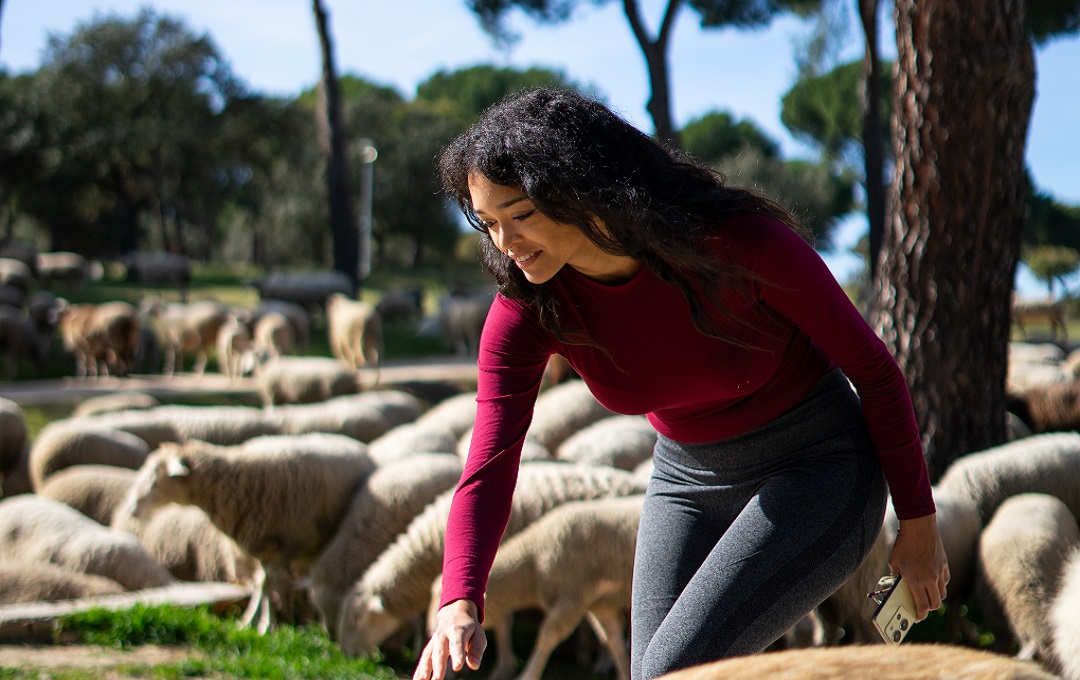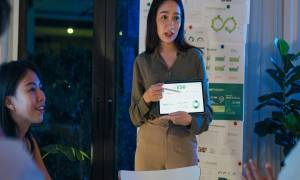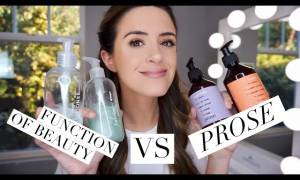1. Introduction: Why Wool Recycling Matters
Woolrec In an age when sustainability is no longer optional but expected, the textile industry faces mounting pressure to transform. Traditional fiber production, particularly wool, exerts significant demands on water, land, energy, and ecosystems. Concurrently, textile waste is rising precipitously: millions of tons of garments and fabric scraps end up in landfills each year.
Wool, while a natural and biodegradable fiber, is rarely recycled at scale, partly because of technological, logistical, and economic constraints. This is where Woolrec a concept fusing wool recycling with innovations in processing and circular economy design emerges as a frontrunner in the green textile movement.
In this article, we explore how Woolrec can reshape wool’s life cycle, reduce environmental footprints, unlock cost efficiencies, and provide a competitive edge to brands and manufacturers that adopt it.
Table of Contents
- Introduction: Why Wool Recycling Matters
- What Is Woolrec? — Concept & Vision
- The Environmental Imperative
- Textile Waste and Landfills
- Water, Energy & Emissions Savings
- Soil, Biodiversity & Animal Welfare
- How Woolrec Works — From Waste to High-Value Fiber
- Collection & Reverse Logistics
- Sorting & Quality Grading
- Cleaning, Decontamination & Dye Removal
- Mechanical vs. Chemical Recycling
- Blending, Spinning & Yarn Regeneration
- Manufacturing New Products
- Advantages of Woolrec over Virgin Wool & Synthetics
- Material Quality & Performance
- Cost & Resource Efficiency
- Branding & Market Differentiation
- Circular Economy & Waste Reduction
- Applications & Use Cases
- Fashion & Apparel
- Home Textiles, Rugs & Interiors
- Technical Textiles, Insulation & Acoustics
- Automotive, Aerospace & Industrial
- Agricultural, Packaging & Biodegradable Uses
- Challenges & Barriers to Adoption
- Mixed-Fiber Blends & Separation
- Infrastructure & Capital Investment
- Quality Loss Over Recycling Cycles
- Consumer Awareness & Trust
- Regulatory, Certification & Standards
- Technology & Innovation Trends
- AI & Smart Sorting
- Enzymatic / Biochemical Treatments
- Nanotechnology & Fiber Reinforcement
- Blockchain & Traceability
- Design for Recycling (DfR) & Circular Product Design
- Market Outlook & Economics
- Market Size & Growth Projections
- Cost Structure & Pricing Models
- Investment Trends & Funding
- Regional & Policy Drivers
- Best Practices & Implementation Strategies
- Supplier & Brand Collaboration
- Pilot Programs & Scaling
- Certifications & Quality Assurance
- Consumer Education & Marketing
- Lifecycle Assessment & Transparency
- Future Vision: Woolrec as an Industry Standard
- Conclusion & Call to Action
- FAQs
2. What Is Woolrec? — Concept & Vision
Woolrec is shorthand for wool recovery + recycling, but it implies much more: it is a systemic approach combining logistics, processing, quality control, blending, design, and marketing to reintegrate wool fibers back into the textile value chain.
At its core, Woolrec’s vision is to establish a closed-loop wool ecosystem—one in which every wool garment or textile waste has a predictable path back into new production rather than languishing in landfills. It envisions:
- Zero-waste systems for wool-producing nations and textile hubs
- High-value recycled yarns indistinguishable in performance from virgin wool
- Traceability and transparency from sheep to garment to recycle
- Consumer-aware branding that celebrates recycled wool
- Cross-sector use cases, beyond fashion, in home textiles, industrial, automotive, and more
In effect, Woolrec is not merely a process, but a movement toward reconceiving how wool is sourced, used, disposed of, and re-used.
3. The Environmental Imperative
Textile Waste and Landfills
- Globally, over 100 billion garments are produced annually, and a large share ends in landfills or incinerators.
- Wool items, though biodegradable, often degrade slowly under landfill conditions and may be bound with synthetic blends or dyes, affecting decomposition.
- By diverting wool waste via a Woolrec model, you can reduce landfill load and associated methane emissions.
Water, Energy & Emissions Savings
- The production of virgin wool is water- and energy-intensive: raising sheep, washing, dyeing, processing, transportation—each stage incurs environmental cost.
- Recycling wool via Woolrec can save kiloliters of water per kg of wool and reduce carbon emissions up to 70% compared to virgin wool (depending on process and scope). (Note: these numbers depend on region and process efficiencies; they should be backed by case studies or LCA reports.)
- Recycled wool also reduces the need for new grazing lands, fertilizers, and feed, all of which carry embedded environmental costs.
Soil, Biodiversity & Animal Welfare
- Overgrazing for wool production can degrade soils and reduce biodiversity. A Woolrec-centric approach reduces demand for additional wool production pressure.
- Ethical sheep-farming practices (rotational grazing, minimal chemical use, humane treatment) further complement Woolrec’s sustainability goals.
- Reducing the reliance on virgin wool production allows fragile ecosystems to recuperate.
4. How Woolrec Works — From Waste to High-Value Fiber
Below is a step-by-step breakdown of the Woolrec cycle:
Collection & Reverse Logistics
- Sources: end-of-life garments (post-consumer), factory cut-offs, unsold stock, trimming waste.
- Channels: take-back programs in retail, textile banks, waste-collection points, municipal recycling systems.
- Transportation & Pre-sorting: items may be sorted at collection points to reduce contaminant load and logistical burden.
Sorting & Quality Grading
- Manual or automated sorting (e.g. using optical sensors, near-infrared) distinguishes:
- Pure wool vs wool blends
- Color and dye classes
- Degree of wear and contamination
- Fiber length, strength, felting state
- This sorting ensures that the downstream process is efficient and the output quality is predictable.
Cleaning, Decontamination & Dye Removal
- Wool waste must be cleaned of dirt, oils, finishing chemicals, and residual dyes.
- Methods may include:
- Enzymatic / biological treatments (gentler, eco-friendly)
- Mild chemical baths using less harsh solvents
- Ultrasonic or steam cleaning
- Dye removal (decolorization) is vital if re-dyeing to a new color. Care must be taken not to degrade fiber proteins.
Mechanical vs. Chemical Recycling
- Mechanical Recycling:
- Fibers are shredded or carded back into staple form.
- Minimal chemical use.
- Best for less damaged or relatively pure wool streams.
- However, fiber length shortens after cycles, possibly reducing strength.
- Chemical / Wet / Dissolution Recycling:
- Wool is dissolved or chemically processed (e.g. keratin solubilization) and rebuilt into fibers.
- Good for severe contamination or mixed-color waste.
- Requires careful environmental controls and closed-loop solvent recovery.
Often, hybrid systems combine mechanical pre-processing and chemical finishing.
Blending, Spinning & Yarn Regeneration
- Recovered wool staples are blended with virgin wool (or other fibers) to balance performance and cost.
- Spinning, weaving / knitting, and finishing processes are performed just as in virgin wool yarn production.
- Post-treatment (e.g. anti-shrink finish, performance coatings) may be applied depending on end-use.
Manufacturing New Products
- The regenerated yarn is used in garments, home textiles, carpets, insulation boards, interior panels, acoustic panels, etc.
- In many applications, the recycled wool is indistinguishable from virgin in performance.
This closed-loop process, done right, means new products contain a meaningful fraction of recycled wool, reducing reliance on virgin fibers.
5. Advantages of Woolrec Over Virgin Wool & Synthetics
Material Quality & Performance
- Modern processes can preserve > 80–90% of original fiber strength, with tactile feel comparable to virgin wool.
- Recycled wool maintains many wool’s natural advantages: thermal regulation, moisture-wicking, flame resistance, odor resistance, breathability.
Cost & Resource Efficiency
- Recycling cuts raw material acquisition costs, and reduces waste handling, disposal, and virgin sourcing.
- Energy, water, and chemical savings further lower total cost per kg of fiber.
Branding & Market Differentiation
- Brands using Woolrec can market transparency, sustainability, and circular economy alignment.
- Consumer demand for eco-friendly fashion is rising: using recycled wool becomes a differentiator.
Circular Economy & Waste Reduction
- Woolrec accelerates the shift from “take–make–dispose” to “collect–reuse–regenerate.”
- By retaining fibers in the loop, waste is minimized and resource efficiency maximized.
6. Applications & Use Cases
Fashion & Apparel
- Sweaters, coats, scarves, hats, socks, knitwear—all can incorporate recycled wool with no compromise on performance or style.
- Luxury brands have begun limited recycled wool lines to signal environmental positioning.
Home Textiles, Rugs & Interiors
- Carpets, upholstery, curtains, blankets, throws benefit from wool’s insulation and durability.
- Recycled wool brings sustainable credentials to interior design.
Technical Textiles, Insulation & Acoustics
- Wool’s natural acoustic and thermal properties make it ideal for insulation panels and soundproofing in buildings.
- Recycled wool can serve in geotextiles, felt boards, or thermal linings.
Automotive, Aerospace & Industrial
- Interior liners, seat padding, headliners, insulation — recycled wool offers flame retardance, vibration damping, and eco appeal.
- Industrial filters, padding, and mats are other potential applications.
Agricultural, Packaging & Biodegradable Uses
- Lower-grade recycled wool can be used as biodegradable mulch mats, compostable packaging, or soil amendments.
These diverse use cases make Woolrec a multi-industry enabler.
7. Challenges & Barriers to Adoption
Mixed-Fiber Blends & Separation
- Many garments contain wool blended with synthetics, making fiber separation difficult.
- Efficient deblending technologies are needed to extract pure wool content.
Infrastructure & Capital Investment
- Setting up collection, sorting, recycling lines, and quality labs requires significant upfront capital.
- Logistical complexity (reverse logistics, transport) is nontrivial.
Quality Loss Over Recycling Cycles
- With repeated cycles, fiber shortening and quality degradation can occur, limiting the number of reuses.
- Blending strategies and fiber reinforcement may be necessary.
Consumer Awareness & Trust
- Consumers may perceive recycled wool as inferior or less durable.
- Certification, branding, and transparency must address these perceptions.
Regulatory, Certification & Standards
- Lack of standardized certifications for recycled wool content, traceability, or process environmental credentials.
- Regulatory support (subsidies, tax breaks) is still nascent in many regions.
Addressing these challenges is essential for scaling Woolrec from niche to mainstream.
8. Technology & Innovation Trends
AI & Smart Sorting
- Machine learning and computer vision can improve sorting accuracy, reduce human error, and speed processing.
- Adaptive algorithms can optimize fiber stream routing.
Enzymatic / Biochemical Treatments
- Enzymes can selectively break down dyes or unwanted compounds without harsh chemicals.
- Biological methods reduce environmental footprint.
Nanotechnology & Fiber Reinforcement
- Nanomaterials or microfibers can enhance strength, durability, or flexibility of recycled wool blends.
- This enables recycled wool to compete in high-performance textile segments.
Blockchain & Traceability
- Blockchain or distributed ledger tech ensures transparency from fiber origin, collection, recycling to final product.
- Consumers and brands can verify claims of recycled content and process integrity.
Design for Recycling (DfR) & Circular Product Design
- Garments and textiles designed with disassembly, mono-materials, and minimal contamination facilitate easier recycling down the line.
- Collaborative design between brands and Woolrec facilities is key.
These innovations will drive Woolrec efficiency, reliability, and scalability.
9. Market Outlook & Economics
Market Size & Growth Projections
- The global wool recycling market is growing steadily, with opportunities across fashion, home textiles, and industrial sectors.
- Some reports project 15–25 % annual growth, driven by sustainability mandates.
Cost Structure & Pricing Models
- Costs include collection logistics, sorting, cleaning, equipment depreciation, labor, energy, and finishing.
- Recycled wool may be 10–30 % cheaper (or more) than virgin wool, especially in resource-constrained markets.
Investment Trends & Funding
- Venture capital, corporate ventures, and government grants are increasingly funding fiber recycling and circular textile startups.
- Strategic partnerships between brands, recyclers, and tech firms are common.
Regional & Policy Drivers
- Europe, North America, and parts of Asia are leading due to stricter environmental regulations and consumer demand.
- Government incentives, carbon credits, extended producer responsibility (EPR), and waste regulations can accelerate adoption.
10. Best Practices & Implementation Strategies
Supplier & Brand Collaboration
- Woolrec facilities must work closely with fashion brands to align on design, take-back, and quality goals.
- Long-term contracts and shared investments foster stability.
Pilot Programs & Scaling
- Start small with pilot collections, limited SKUs, and local logistics, then scale as processes mature.
- Monitor KPIs (recovery rate, rejection rate, fiber quality, cost) and iterate.
Certifications & Quality Assurance
- Adopt or push for standards (such as Global Recycled Standard (GRS), OEKO-TEX, etc.) tailored for wool recycling.
- Independent testing for fiber strength, dye fastness, shrinkage, pilling should be disclosed.
Consumer Education & Marketing
- Transparent storytelling on recycled wool’s journey builds consumer trust.
- Labels, QR codes, microsites, and marketing campaigns can highlight recycled content and impact metrics.
Lifecycle Assessment & Transparency
- Perform LCAs comparing virgin vs recycled wool, including scope 1/2/3 emissions, water, land use.
- Publish impact reports, carbon savings, water savings, and waste diverted.
By following best practices, brands and recyclers can avoid pitfalls and build credibility.
11. Future Vision: Woolrec as an Industry Standard
Imagine a future where:
- Every wool garment is designed with its next life in mind, with labels prescribing recycling paths.
- Consumers drop off old wool garments at retail take-back bins or municipal textile recycling points.
- Local Woolrec facilities collect, sort, recycle, and re-supply high-quality yarn to the same brands.
- Traceability systems let consumers scan a code to see their shirt’s recycled fiber lineage.
- Circular textiles, carbon credits, and sustainability are not PR gimmicks but operational foundations.
In such a world, Woolrec becomes as normal as recycling paper or plastic an accepted standard in the textile economy.
12. Conclusion
Woolrec is more than a recycling technique it represents a transformative shift in how we produce, use, and renew wool. By closing the loop on wool fibers, we not only conserve precious resources, reduce waste, and lower carbon footprints, but also open new pathways for innovation, branding, and ethical consumption.
If you are a fashion brand, textile manufacturer, interior designer, or investor, now is the moment to explore Woolrec. Start with pilot programs, partner with recycling innovators, and commit to transparent storytelling. The first movers will win both sustainability credibility and market differentiation.
- Audit your wool waste streams and potential collection sources
- Partner with a reputable wool recycling or R&D facility
- Develop limited “recycled wool” capsule collections and measure impact
- Educate your customers about the value of recycled wool
By doing so, you don’t just ride the sustainability wave you help define its future.
13. FAQs
Q1: How many times can wool be recycled?
While mechanical recycling shortens fiber length over cycles, quality can often be maintained for 2–3 cycles. Blending with virgin wool or reinforcement techniques can extend reuse.
Q2: Does recycled wool feel inferior?
No. Modern processes preserve softness, strength, and thermal properties. Many consumers cannot distinguish recycled from virgin in everyday wear.
Q3: Is Woolrec feasible for small brands?
Yes. Even small brands can aggregate returns or partner in pooled collection schemes. Start with limited runs or blends.
Q4: What certifications exist for recycled wool?
Currently, standards like GRS (Global Recycled Standard) and MRSL (Manufacturing Restricted Substances List) apply, but industry-specific wool recycling certifications are emerging.
Q5: Is chemical recycling environmentally safe?
When done with closed-loop solvent recovery, minimal emissions, and proper waste management, chemical recycling can be safe and efficient. Enzymatic / biochemical methods are promising alternatives.
Read More: kirby dedo: Explain Evolution Concept to Character Classic










